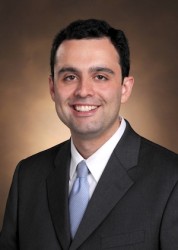![Sethi Photograph[1] Manish Sethi](https://cdn.vanderbilt.edu/vu-news/files/20190418002127/Sethi-Photograph1-165x250.jpg)
Defensive medicine is the practice of ordering additional but unnecessary tests and diagnostic procedures that may later help exonerate physicians from accusations of malpractice. However, these additional costs result in no significant benefit to patients’ care.
Published in the February issue of the American Journal of Orthopedics, the study suggests unnecessary costs associated with the practice of defensive medicine play a substantial role in the nation’s rising cost of health care.
The findings are from a national survey of 2,000 orthopaedic surgeons selected randomly through a list provided by the American Academy of Orthopaedic Surgeons.
Respondents were located in all 50 states and practice in a variety of settings. Of respondents, 96 percent report practicing defensive medicine, which accounts for 24 percent of all imaging studies, laboratory tests, consultations and hospital admissions among the survey’s cohort.
“Currently, our nation’s expenditure on health care is 20 percent of GDP [gross domestic product]. This figure really bothers us and served as motivation to conduct this survey,” said Manish Sethi, assistant professor of orthopaedic surgery and rehabilitation, and lead author of the study. “[rquote]If defensive medicine can be curbed, we will see a dramatic reduction in health care costs, and our research makes this case.”[/rquote]
With a 61 percent response rate, the survey gathered data on how many medical tests, such as x-rays or ultrasounds, a physician ordered in a month and how many of those were ordered in a defensive manner.
Using the American Medical Association’s CPT (Current Procedural Terminology) billing codes as a reference point for costs, researchers calculated the average cost of each imaging test then tabulated an average cost per month.
On average, orthopaedic surgeons spent $8,485 per month on the practice of defensive medicine, a figure which equals nearly a quarter of their total practice costs.
Per year, the cost for defensive medicine averages $101,820 per respondent. When this figure is multiplied by the 20,400 orthopaedic surgeons practicing in the U.S., the average cost per year for defensive medicine procedures among this group totals $2,077,128,000.
Ordering excess tests or procedures is known as positive defensive medicine. Researchers also examined the practice of negative defensive medicine, or the practice by physicians of avoiding high-risk patients or procedures in order to limit liability.
In the past five years, 70 percent of respondents reported reducing the number of high-risk patients they treat, while 84 percent reduced or eliminated performing high-risk services and procedures.
Write-in examples of defensive medicine included closing a practice to become a consultant, no longer seeing patients in an emergency room, and not operating on patients with diabetes or heart problems.

“It becomes an access of care issue,” said Alex Jahangir, assistant professor of orthopaedic surgery and rehabilitation, and a study author. “Patients are now losing access to physicians if they happen to be a diabetic, obese, or a smoker with heart problems. Their care will be delayed; the costs will increase because they have to be flown to a tertiary center. Negative defensive medicine is a big part of the problem.”
Sethi was previously involved in a similar study of orthopaedic surgeons in Massachusetts that found comparable results, but this is the first to demonstrate defensive medicine practices are common nationwide.
Sethi and Jahangir propose that reforms should focus more on evidence-based medicine than liability policies.
“We believe an evidence-based approach is the best approach,” Sethi said. “If we can develop standards of practice that are accepted across the nation, physicians won’t need to order these additional x-rays and MRIs to protect themselves, and we know costs will go down.”
Media contact: Craig Boerner, (615) 322-4747